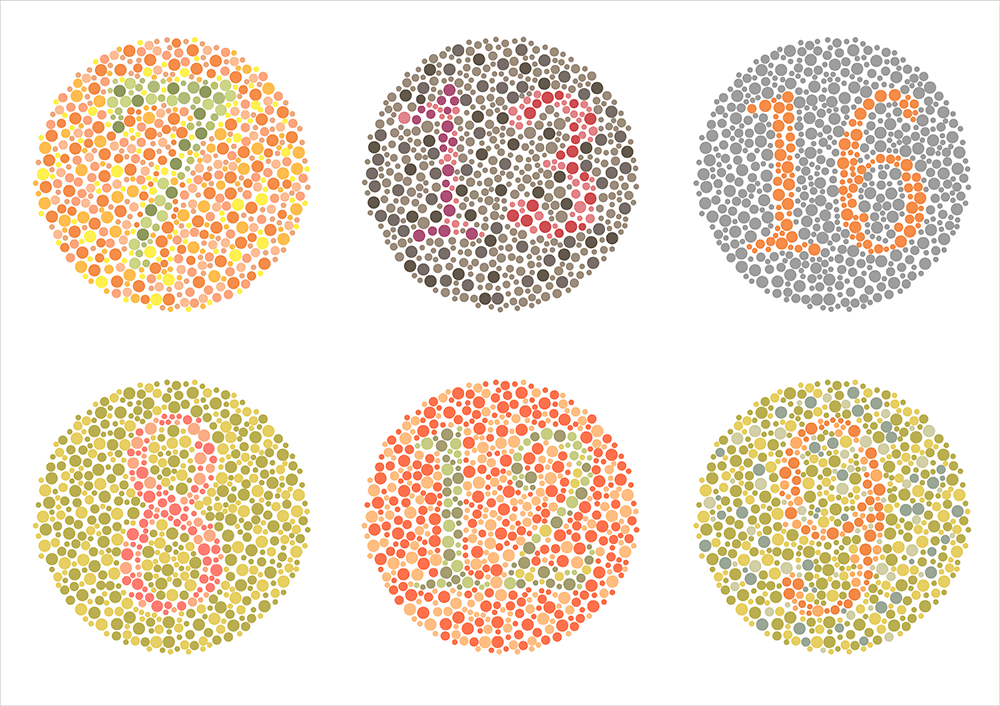I recently discovered an interesting article on UXBooth tilted Resources for Eliminating Bias in Design. In this essay; author Benjamin Evans, a UX Designer and advocate for accessible and inclusive design, describes how, as designers our work is unconsciously limited by bias, and the ways we can identify and overcome them.
Evans starts off by describing an encounter he had with a gentleman, when he was looking for user feedback on a color palette he created for a client’s site. When Benjamin asked the man what he thought, the man simply said he “didn’t like it, it was too boring, and it all looked the same”. Through further questioning, it was realized that the man was colorblind. What looked one way to Evans and to others, looked completely different to another. This is where Benjamin realized that he had a “massive blind spot”. Even though Benjamin understood that every person sees “different things” within a design, through this particular discovery, Evans found that there are things in design that some people actually cannot see, “things that were so obvious to me could literally be invisible to another person,” Evans explained. This brings up the topic of awareness, and to what degree as UX designers, are we aware of our user needs and capabilities. It is important to understand, and try to practice accessible design, and to be aware of our own “blind spots” and “unconscious biases.”
The Unconscious Bias Blind Spot:
According to the article, biologically, biases help us to process the world as efficiently as possible. Our brains have developed filtration mechanisms to handle, and make sense of, the vast amounts of data that our minds take in on a daily basis. Personal bias is formed through a combination of this filtration system with learned habits and beliefs. This leads to the development of a limited perspective of the world, or personal bias. To be clear, if we did not filter our experience of the things around us, through these mechanisms, we would be completely overwhelmed. However, this is where a problem can develop; as Evans states; because we have this unconscious filtration, “we often forget that we are operating within a bias, and this is where we start to develop a blind spot.”
The Bias Blind Spot in Design:
When a designer understands, identifies, and comforts their unconscious bias blind spot then, according to the article, they can truly do their best and most effective work. Evans explains that if a designer cannot see outside their blind spot, their work could frustrate users and alienate audiences. By not realizing their biases, designers can potentially have the issue of not incorporating inclusive design within their products which will then result in creations that do not have a wide-ranging appeal. Evans explains that the one thing that prevents UX designers from doing their best work is the unconscious decisions that are made, based on the limited view of “our craft, the world, and ourselves; when we shed light on our unconscious bias-which we can’t see without external feedback-we free ourselves to rise to the next level of success in UX design.” This is import for UX designers to understand, that we all have these “blind spots,” that in one way hinder our work, but if we can identify them we can start to create better products that will reach more users.
Overcoming the unconscious bias in UX design:
Benjamin Evans describes three ways to overcome the unconscious biases designers may have. The first step is identifying it. Designers must identify that they have a bias in the first place if they aspire to have “greater levels of awareness and new perspectives.” Designers should acknowledge that they are operating under an unconscious bias so that they can have the awareness to do something about it. Evans explains that identifying our own bias can be difficult but there are numerous tools available to understand them.
These tools are:
Designing for Worldview framework by Emi Kolawole of the Stanford D School, which rises unconscious bias awareness through a series of practical design thinking exercises. Another tool is form the AIGA and designer and sociologist, Leyla Acaroglu of Disrupt Design. Together they created the Gender Equity Toolkit, which is a set of resources that challenge implicit gender related bias. Project Implicit created by Harvard University, is a resource for solo designers that gives an easy way to self-test a designer’s levels of prejudice about age, gender, and race.
The second way to overcome unconscious bias is to “seek to broaden perspectives.” This meaning that designers need to consciously see their UX design from a variety of perspectives other than their own. Also, when working with clients, designers should fully listen and empathize with what is said by the person across form them. Designers need to see their work from all angles to not leave any user group out. Designers need to ask themselves how will different types of users perceive this experience?
Lastly, designers need to be a part of, and create diverse design teams. As Evans states, “to create globally relevant experiences for a wide spread of users, we need diverse design teams that can help counter the unconscious bias present in homogenous groups.” This means that in order for designers to produce meaningful design, that can reach large groups of users, there needs to be diversity within their teams to give a user a well-rounded experience.
When thinking about new design or creating user experiences, designers need to understand and realize the unconscious bias that may govern their decisions. Only when designers can acknowledge that they have bias blind spots, and start to overcome those biases, then they will be able to create better and more impactful user experience and design.
Helpful links:
http://www.aiga.org/gender-equity-toolkit
https://implicit.harvard.edu/implicit/
https://drive.google.com/drive/folders/0B7YXKZ5JyYu4V3lyekl3c081ejQ
